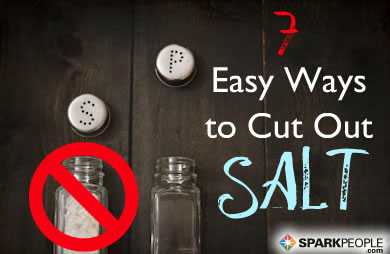|
A new voluntary "front-of-package" nutrition labeling system called the Smart Choices Program was introduced at last month's Food and Nutrition Conference and Expo of the Academy of Nutrition and Dietetics (formerly the American Dietetic Association). And, to compound confusion, this isn't the only label you'll soon see on food in supermarkets. So what is the Smart Choices Program and how can it help you? The Smart Choices Program guidelines provide science-based criteria grounded in the 2005 Dietary Guidelines for Americans. Qualifying guidelines have been developed in 18 different categories and products bearing the logo on their packaging must adhere to standards related to nutrients, food groups and calories. The goal of the Smart Choices Program is to provide a consistent and easy to find nutrition guideline on packaging, regardless of where you shop or what brand you buy. The Smart Choices Program symbol and labeling information are expected to appear on packages starting in mid-2009. Let's take a closer look at the program to see if it will be your key to nutrition success and improved health or simply a new marketing strategy. Program development - The Keystone Center, a non-profit specializing in creating consensus solutions to public health problems, provided the leadership for this nutrition labeling initiative. Program participants - Several large companies have said they'll participate in the voluntary program. Some of the companies include: Coca-Cola (US), ConAgra Foods, General Mills, Kellogg Company (US), Kraft Foods, PepsiCo (US), Unilever (US) and Wal-Mart. Other companies, such as Nestlé, are assessing the program and how it could be implemented in their company. It should be noted that some of these companies have been Keystone Center contributors. Specific Smart Choice nutrition criteria - Foods and beverages that qualify will be items that follow these dietary guidelines. Limiting nutrients to these benchmarks
At least 10% Daily Value of one of these healthy nutrients must be present
Provides at least 1/2 serving of one of these key food groups
Smart Choice products will also state calories per serving and servings per container on the front of the packaging to help consumers control their calorie consumption. The bottom line - The intention of this voluntary program is to provide uniformity on the front of packages to help consumers select a product within specific health guidelines more quickly. We currently have the mandatory Nutrition Fact Label on the back of packages that provide most of the information necessary to make a healthy food or beverage selection. The overall guidelines suggest healthy limits for key nutrients. However, the inclusion of foods or beverages is very loosely based related to fitting in one but not all of the criteria. This could mean that foods still contain high fructose corn syrup and carry the Smart Choice check mark. This program also leaves out identification of other key nutrition and health related information. The green check mark would tell you nothing about whether the item was organic, free of hormones or pesticides, or if it contains genetically altered products. While the program is based on a general set of guidelines determined by retailers, food and beverage manufactures, health professionals, research organizations and scientists, it does represent those with a vested interest in enhancing food and nutrition knowledge for consumers. It is easy to see that some of these groups have more to gain in the success of this program. The PR and media campaign will be kicking into high gear in the coming weeks in an attempt to make this program a standard by which Americans select foods. It is important, however, to realize that just as manufacturers benefit from using Loopholes in Food Labeling and vague terms to suggest health benefits of their product over another, this loose set of voluntary guidelines will likely attempt to do the same. With the mandated FDA Nutrition Facts Label already required on the backs of all products, it would be best to use what you know about healthy choices and reading labels as well as a product's price and path to market to make your food and beverage selections. If the products you select happen to have the Smart Choice green check mark as well, all the better. Do you think a new food labeling program is necessary? What type of uniform packaging information would you find most helpful? |
Popular Entries
More From SparkPeople
|















